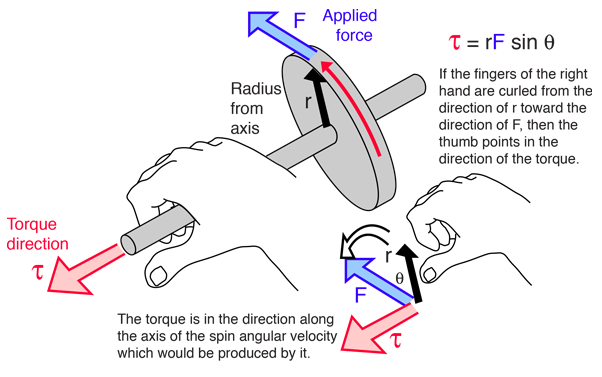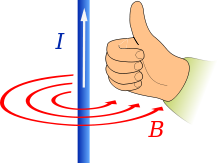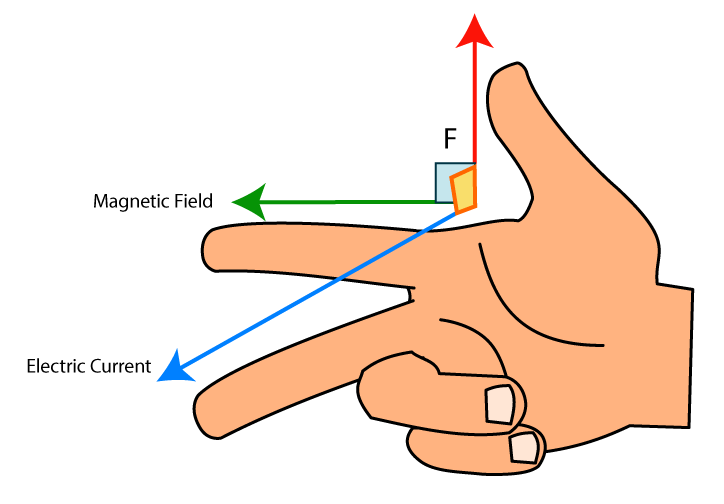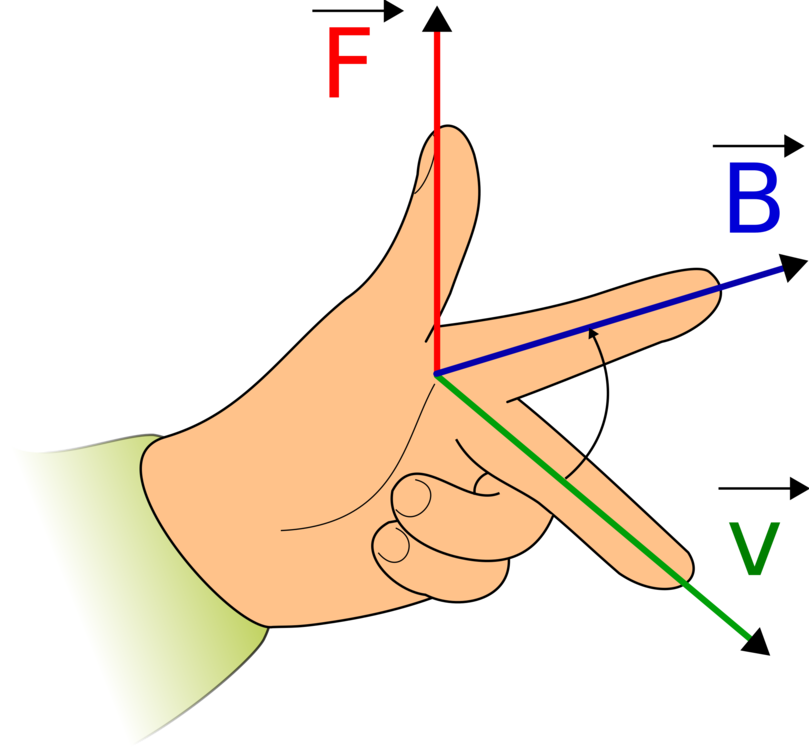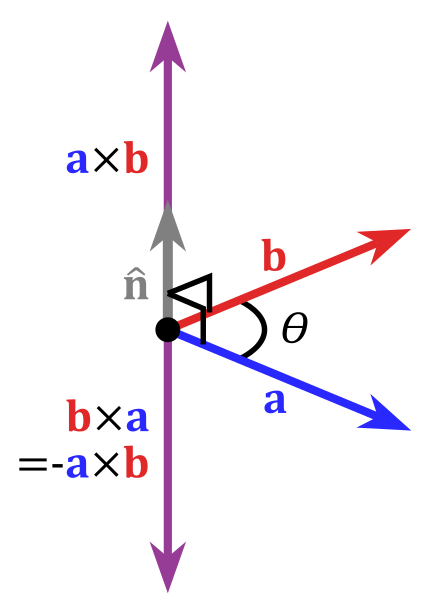Right Hand Thumb Rule In Vectors

Using a right hand drawing convention the vector.
Right hand thumb rule in vectors. The right hand rule is a convention in vector math. Hold your index finger middle finger and thumb so that they are all perpendicular to each other like an x y and z coordinate system. The direction of the lorentz force the direction of the magnetic field due to a current carrying conducting wire etc. The vector product of a and b is always perpendicular to both a and b.
Right hand rule vector product the direction of the vector productcan be visualized with the right hand rule. A the vector sum c a b b a. Then point your middle finger perpendicular to your thumb and index finger like this. To form the mnemonic first make an l shape with the thumb and first two fingers of your right hand.
If you grip the imaginary axis of rotation of the rotational force so that your fingers point in the direction of the force then the extended thumb points in the direction of the torque vector. The direction of the cross product is given by the right hand thumb rule. Right fingers curled in the direction of rotation and the right thumb pointing in the positive direction of the axis. Start by closing your right hand and stick out your pointer finger.
This allows some easy calculations using the vector cross product. If we curl the fingers of the right hand in the order of the vectors then the thumb points to the cross product the right hand thumb rule has many applications in magnetism. C left a cos θ is the component of a along b and right b cos θ is the component of b along a. Now rotate your hand so that your index finger points in the.
The right hand grip rule is a convention derived from the right hand rule convention for vectors. If you curl the fingers of your right hand so that they follow a rotation from vector a to vector b then the thumb will point in the direction of the vector product. D left the right hand rule used to find the direction of e a b and right the right hand rule used to find the direction of e b a. B the vector difference a b a b d.
Using the right hand rule to find the direction of the cross product of two vectors in the plane of the page. It helps you remember direction when vectors get cross multiplied. Of course if w is orthogonal to u and v then the relaxed right hand rule is the same as the right hand rule. Stick your thumb straight up as though you were making the sign for a gun.
Vectors u and v let n u v be the unit vector in the direction that your thumb points as the ngers of your right hand curl from u to v.



